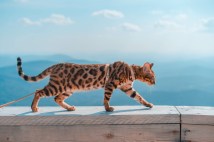Understanding the evolutionary journey of mammals, reptiles, and birds provides fascinating insights into the diversity of life on Earth. These groups share common ancestors but have evolved unique traits that help them thrive in various environments. This article explores their origins, key adaptations, and how they are interconnected through evolution.
Origins and Early Evolution
Reptiles were among the first vertebrates to adapt to life on land during the Carboniferous period. From these early reptiles evolved distinct lineages, including those leading to modern reptiles and birds. Mammals emerged later from a group of reptile-like ancestors known as synapsids during the late Permian period. Their evolutionary history reflects gradual changes in physiology and behavior that allowed them to occupy diverse ecological niches.
Key Adaptations in Reptiles
Reptiles developed scaly skin that prevents water loss, enabling them to survive in dry habitats. They also possess amniotic eggs with protective shells that allow reproduction away from water sources. Additionally, their cold-blooded metabolism means they rely heavily on environmental heat for body temperature regulation.
Birds: The Avian Evolution Story
Birds evolved from theropod dinosaurs during the Mesozoic era. Their feathers initially served purposes like insulation or display before adapting for flight. Birds have lightweight skeletons, efficient respiratory systems, and keen eyesight—traits that support active flight and high metabolic rates distinct from their reptilian ancestors.
Mammalian Innovations
Mammals possess unique features such as hair or fur for insulation and mammary glands for nourishing young ones with milk. Endothermy (warm-bloodedness) allows mammals to maintain stable internal temperatures regardless of external conditions. They also exhibit complex brain structures promoting advanced sensory perception and social behaviors.
Evolutionary Relationships Among the Three Groups
Though mammals, reptiles, and birds share a common amniote ancestor dating back hundreds of millions of years ago, each group diverged significantly over time. Birds are technically classified within reptiles due to their dinosaur lineage; however, mammals branched off along a different evolutionary path earlier than birds did from other reptiles.
By exploring how mammals, reptiles, and birds evolved distinctive traits while retaining ancestral connections, we can appreciate both their diversity and shared heritage within the tree of life. This understanding enriches our knowledge about biological adaptation processes shaping life on our planet.
This text was generated using a large language model, and select text has been reviewed and moderated for purposes such as readability.






